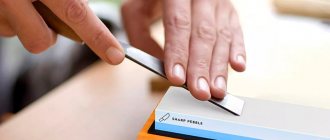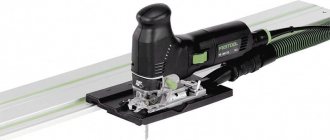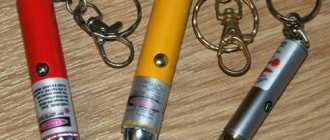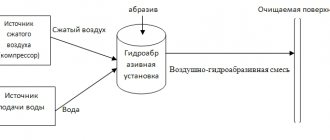| Place | Name | Characteristics in the rating |
| Top 10 best car polishing pastes |
| 1 | 3M 80349NF | Best all-rounder |
| 2 | TURTLE WAX Metallic Car Wax + PTFE | The most worthy budget pasta |
| 3 | Willson WS-02036 | The best superfine polish |
| 4 | G12310 Plast-X Meguiars | Restoring the transparency of plastic headlights |
| 5 | SONAX ProfiLine Headlight Polish | The best product for headlights |
| 6 | Doctor Wax Polyflon | Easy to use, long lasting paste |
| 7 | Koch Chemie F6.01 | Complete removal of scratches |
| 8 | Farecla G3 | Enhances paint shine |
| 9 | AREXONS Abrasive Paste | Removes oxides, stains, serious scratches |
| 10 | Menzerna 400 Heavy Cut Compound | Universal quick-acting remedy |
No matter how carefully the driver handles his car, scratches appear on the paintwork over time. The environment does not spare cars, leaving them with scuffs and peeling places. However, there is a way to restore your car to its original shine. Polish in the form of pastes is used to restore the appearance of the surface of the body and headlights. These drugs are suitable both for advanced cases and for prevention. They fill microdamages in the paint layer and protect it from aggressive substances. As a result, the car is not afraid of corrosion.
There are dozens of pastes on the market with fine, medium and coarse grains. They differ in the type of defects they deal with. For example, fine grains are sufficient for minor scratches, while powerful abrasive pastes remove large abrasions. Some modern products contain wax, which adds shine to the surface. We have collected the 10 best polishes of different types of action for headlights and car body, based on reviews from drivers.
Polishing technology
Any kind of hard surface can be polished by hand
or using a power tool (
polishing machine)
. The first method is used for processing small areas and allows complete control of the process. The second option is usually used if it is necessary to polish a large area with a minimum of effort.
Technologically, the polishing process occurs in two stages:
1.
rough (preliminary) polishing;
2.
finishing (finishing).
For each stage, certain types of polishing compounds are used, which differ in the size of the polishing particle fractions.
maintains an optimal range of polishing pastes for finishing polishing in
fine
,
medium
and
coarse grits
. We tried to select the most universal brands of pastes for processing different types of hard surfaces by machine and manually.
Let's look at the main options for using this material and decide how to choose and buy the right polishing paste in the Composite Stroy online store (in Moscow or delivery to any region of the Russian Federation).
For what materials is GOI paste not suitable?
Do not forget that polishing even with such a miracle drug causes irreparable damage to some materials. It is not recommended to influence:
- gilding (risk of erasing the top layer);
- steel and nickel (except for scissors and knives);
- sapphire glass from a watch (the procedure is ineffective).
Have you used GOI at home? What advice would you give to readers? Write about your impressions in the comments below.
What is polishing
Polished surfaces look much more beautiful than raw materials. The wood is given the desired shade, emphasizing the decorative nature of the natural pattern. Additionally, the wood is protected from moisture, mechanical damage and absorption of foreign odors. The products are not afraid of aggressive household chemicals and fungal processes.
For polishing, they use compounds that professionals call varnish. Using special technology, thin layers are removed from the processed material. The characteristics of the products resemble varnishes, but they allow you to obtain a more transparent, lighter coating.
Car polishing paste
Any vehicle during operation is subject to undesirable mechanical influences, as a result of which roughness
,
scuffs
and even
scratches
. Therefore, car polishing paste has been and remains an indispensable tool in the car enthusiast’s arsenal. This is one of the most accessible tools for independent use. Using polishing paste you can get rid of minor damage to the body and restore it to its former shine.
Multi-stage processing involves using a different polishing agent at each stage.
1.
To eliminate visible traces of ingrained dust, scratches and traces of pebbles, use compositions with large and medium polishing components (
Oskar’s M-50 coarse
and
Oskar’s M-100 medium
).
2.
For final polishing and achieving a mirror-like shine of the body, use products with small abrasive particles (
Oskar’s M-150 thin
).
Both headlights and car glass can be treated with polishing paste. Of course, for this you should use a product with less abrasiveness. for example, Oskar's M-150
with superfine fractions of aluminum oxide in its composition.
How to polish varnish
When working with a varnished surface, first smooth out the unevenness. The polish is applied to the tampon. Using continuous zigzag movements, distribute the composition over the tree. The material with the solution cannot be held for a long time at any point. If the product comes into contact with the transparent layer for a long time, it will corrode the area. A cloudy spot will form in the problem area, which is difficult to remove.
Restoration of the table Source market-crimea.com
Before polishing the varnish, the wood is sanded. We recommend using a sander with discs of different grain sizes. At the initial stage, take the coarsest sandpaper (600-800), gradually moving to fine sandpaper (1000-1500). During processing, dust is generated, which is removed with a construction vacuum cleaner or a napkin. When replacing the nozzle, the debris is completely removed.
When using grinding equipment, choose moderate or low speed. At maximum mode, the varnish heats up, melts and sticks. When working with nitro varnish and polyurethane composition, the equipment is set to the slowest speed or sanded by hand.
How to polish correctly Source luxury-house.org
After treatment, the wood is left to dry for 7 days. After polymerization, the procedure with the polish is repeated. The swab is moved over the surface in movements reminiscent of figure eights. To polish acrylic varnish, you can use a sander at medium speed.
The second drying lasts 10 days. Then they start polishing. The wood is rubbed with a cloth soaked in alcohol. The procedure facilitates the removal of polish residues, especially oil components.
Matte varnishes should not be polished. After drying, a transparent velvety surface appears on the wood. Glossing will spoil the decorative effect and give the material a slight shine. The procedure is relevant when the coating is damaged, helping to mask scratches or hide drips.
Myth 2: Professional compositions contain silicones, so the surface has a rich shine
The composition of the polishing paste is also important. The absence of silicones, which can harm the quality of the paint, is critical. Pastes for professional use do not contain these types of materials, but to be sure, it is worth looking for the safety data sheet of the product. Every bona fide manufacturer must provide this document upon request of the client. Below is an example of one of the 3M™ 50417NF products that produces a high gloss finish without containing any silicones. It can be seen that all substances in the table are safe for the painting process.
Table 2. Components of abrasive polishing paste
| Ingredient | CAS No. and EC No. | % by weight |
| Water | 7732-18-5 231-791-2 | 30 — 50 |
| Aluminium oxide | 1344-28-1 215-691-6 | 15 — 30 |
| Hydrogenated kerosene | 64742-47-8 265-149-8 | 5 — 15 |
| WHITE MINERAL OIL (PETROLEUM) | 8042-47-5 232-455-8 | 1 — 15 |
| NAFTA (PETROLEUM), HYDRODESULFINATED HEAVY | 64742-82-1 265-185-4 | 7 — 13 |
| Potassium salt of formic acid | 590-29-4 209-677-9 | 0 — 5 |
| Polysorbate 80 | 9005-65-6 | 0 — 5 |
| Glycerol | 56-81-5 200-289-5 | 0 — 5 |
| Ingredient | CAS No. and EC No. | % by weight |
| Castor oil | 8001-79-4 232-293-8 | 0 — 5 |
| HEAVY AROMATIC SOLVENT NAFTA (petroleum) | 64742-94-5 265-198-5 | 1 — 5 |
| ACRYLIC POLYMER(S) | trade secret | 0 — 2 |
| Alkylammonium salt | No | 0 — 2 |
| Mesitive | 108-67-8 203-604-4 | 0 — 1 |
| Trimethylbenzene | 95-63-6 202-436-9 | 0 — 1 |
| 1,2-BENZOTHIAZOLIN-3-ONE | 2634-33-5 220-120-9 | < 0,1 |
Because There are many compounds on the market not for professional use that are recommended for independent use; the requirements for them are different.
Recommendations for the selection and use of polishes
When choosing a high-quality polish for processing the body or headlights of a passenger car, focus on the condition of the paintwork and the transparency of the plastic. The type of surface treatment agent depends on the type of defects.
Useful! To quickly achieve the effect, use a wool or microfiber cloth for polishing. Rubbing with the material will quickly remove dirt, polish scratches, and add shine to the surface.
Use these tips:
- for metal surfaces with a large number of defects, use polishes containing abrasives and restorative agents;
- for cars whose operation exceeds 3 years, use synthetic pastes that are gentle on the enamel;
- to give the body a shine, rub metal parts with creamy gels and wax;
- before polishing the vehicle, thoroughly wash the surfaces with car shampoo, rinse the surfaces and dry completely;
- carefully remove drops of bitumen on the metal or stuck lumps of dirt by hand;
- polish the car in clear, windless weather under a canopy;
- do not allow sunlight to hit the surface to be treated;
- avoid dust when polishing;
- use pastes, mentally dividing the body into parts. Consistently sand an area of no more than 0.5 square at a time;
- Apply the polish evenly in a thin layer;
- do not neglect polishing with a dry, soft, lint-free material;
- test the work. Pour water over the treated fragment. Drops collecting in puddles indicate the high quality of the procedure. The coating repels moisture.
Protect your car by choosing from our list of the best polishing pastes for car body polishing. Polishing will protect the metal from the harmful effects of the environment, road reagents, minor mechanical damage, and ultraviolet rays. Sanding with high-quality compounds will help maintain the attractive appearance of the car, the transparency of the headlights, and the cleanliness of the interior.
Polishing paste for plastic
Both in everyday life and in production, plastic polishing is often required. Motorists especially need this, because both inside and outside the car body there are many plastic parts that are subject to wear even to a greater extent than metal ones.
To properly polish the dashboard and external finishing parts, you will need a microfiber cloth, polishing paste for plastic with small fractions of abrasive particles (for example, Oskar's M-150 fine
), as well as a little patience to achieve the perfect shine and shine.
Algorithm of actions
Polishing wood is a complex process consisting of several stages. The final result depends on the sequence and correctness of the performer’s actions. Let's consider the algorithm for unvarnished surfaces.
Grinding
The wood must be cleaned of defects, burrs and cracks. Before polishing, the wood must be sanded with abrasive paper No. 46-60. Then it is treated with finer sandpaper (80-100) and finished with very fine sandpaper (140-170). After the procedure, the surface becomes very smooth and even.
First stage Source 24shopping.com.ua
Padding
The wood is coated with shellac varnish. The suspension is applied using a linen swab. If you use a different type of material, then defects (lint, threads) remain on the wood. A small amount of solution is carefully distributed over the surface, trying to cover different directions. With this technique, it will be possible to saturate microcracks as much as possible.
High-quality polish dries quickly. There are no defects or blisters on the coating. Professionals recommend treating a test surface before polishing the wood. Remove excess with a piece of rag.
After priming, the product is left to dry. On average, the process takes up to 3 days. After polymerization, the wood is sanded. We recommend using fine-grit sandpaper. Any dust that forms is carefully removed with a cloth.
Second stage Source dreamhomesbyrob.com
Polishing
A few drops of vegetable oil are applied to a flax swab and shellac polish is added. Fat improves gliding on the wood surface. When polishing, more alcohol is added to the solution than resin.
During processing, the cloth is carefully passed over the wood. According to technology, they move in slow circular motions. Shellac is applied in three layers. Between tiers a period of complete drying is maintained, sanding with fine sandpaper and cleaning from dust. A light shine will begin to appear after 3 applications.
Cleaning products using GOI depending on the material
The use of polishing compound depends on the type of material.
General principles of cleaning with GOI paste
Polishing the surface at home is easy. It is only important to follow the general advice and not spoil the fabric being processed. The product is used in the following sequence:
- To prevent scratches on the surface, take a piece of rag and soak it in gasoline.
- It is necessary to spread a little green mixture on a rag and wipe it on an unnecessary object made of metal or glass. This will cause excessively large crystals to disintegrate.
- Rub the desired area with light movements without pressure until the body becomes shiny. This treatment will only take 3-4 minutes. It is only important not to scratch the treated area with large particles.
- After finishing the processing, you need to walk over the sanded object one more time with gasoline or immerse the entire product in kerosene.
Metal processing with GOI paste
Before using GOI paste, it is important to decide on the type of metal. For example, silver cutlery (knives, spoons, forks) turns green over the years and requires high-quality cleaning. In order not to accidentally spoil expensive material with roughness and scratches, perform cleaning according to the following scheme, variety No. 3:
- Wash all necessary silver utensils under running water.
- Rub with a soft toothbrush and detergent.
- Separately, pour a glass of water into the saucepan, adding a spoonful of ammonia, a pinch of laundry soap and a whisper of washing powder.
- Boil the appliances in this composition.
- Rub a piece of felt with a bar of paste and treat the utensils. Then take a softer cloth and sand each spoon for a few minutes.
Read more about other silver cleaning methods here.
- Speaking of other metals, goyi is used with great success for knives, drills and other tools. Cleaning of metals is carried out according to the above scheme.
- To polish a watch, you must first remove the watch mechanism.
- Gold is cleaned with flannel or a piece of leather with mixture No. 1 applied. Try to apply without pressure so as not to damage the soft precious metal.
Important! Remember to always apply polish to a cloth or sanding wheel, not to the workpiece. This will prevent unsightly scratches from appearing.
Article on the topic: Methods for cleaning gold.
Video: Cleaning a coin with GOI paste
Processing your phone or tablet screen
To polish the screen of a mobile phone or tablet, you need composition No. 2 and a flannel rag.
Cleaning involves the following steps:
- Apply a thin layer of the green preparation to the flannel.
- Pre-rub any unwanted metal or glass surface with it to remove abrasives.
- Rub the display with light movements without pressure for 5 minutes, be careful when working with a fragile product.
- Remove any remaining product with a clean, dry cloth. The screen will be rubbed until it shines.
Important! The product for plastic is used in the same way as for glass.
Epoxy Resin Polishing Compound
Experts know that after hardening, epoxy never immediately obtains a perfectly smooth surface. Epoxy resin products also require polishing using polishing paste. Epoxy resin is a sensitive surface that is sensitive to thermal effects. Oskar’s polishing paste
with particles of different fractions.
Both retail and wholesale customers can easily buy in the Composite Stroy
polishing paste for cars, stainless steel and other surfaces.
We try to maintain favorable prices for the entire range in Moscow and Russia. Depending on your need, you can purchase products from us in containers of 250 g
and
1000 g
.
Delivery in Moscow
and the territory
of the Russian Federation
is carried out by the company’s vehicles or through transport and “PEC”. For more information on how to place an order, see the “Delivery and Payment” section.
Metal polishing paste
After grinding the parts of machine components and mechanisms, the final stage will be treatment with metal polishing paste. Critical working surfaces must be flat and smooth in order to avoid rapid wear of the unit parts during their operation. Visible parts made of chrome, steel and aluminum are also treated with polishing paste.
Depending on the nature of scratches and roughness on the metal, it is permissible to use any of Oskar’s
- coarse, medium or fine. All of them are problem-free for both manual and machine polishing.











